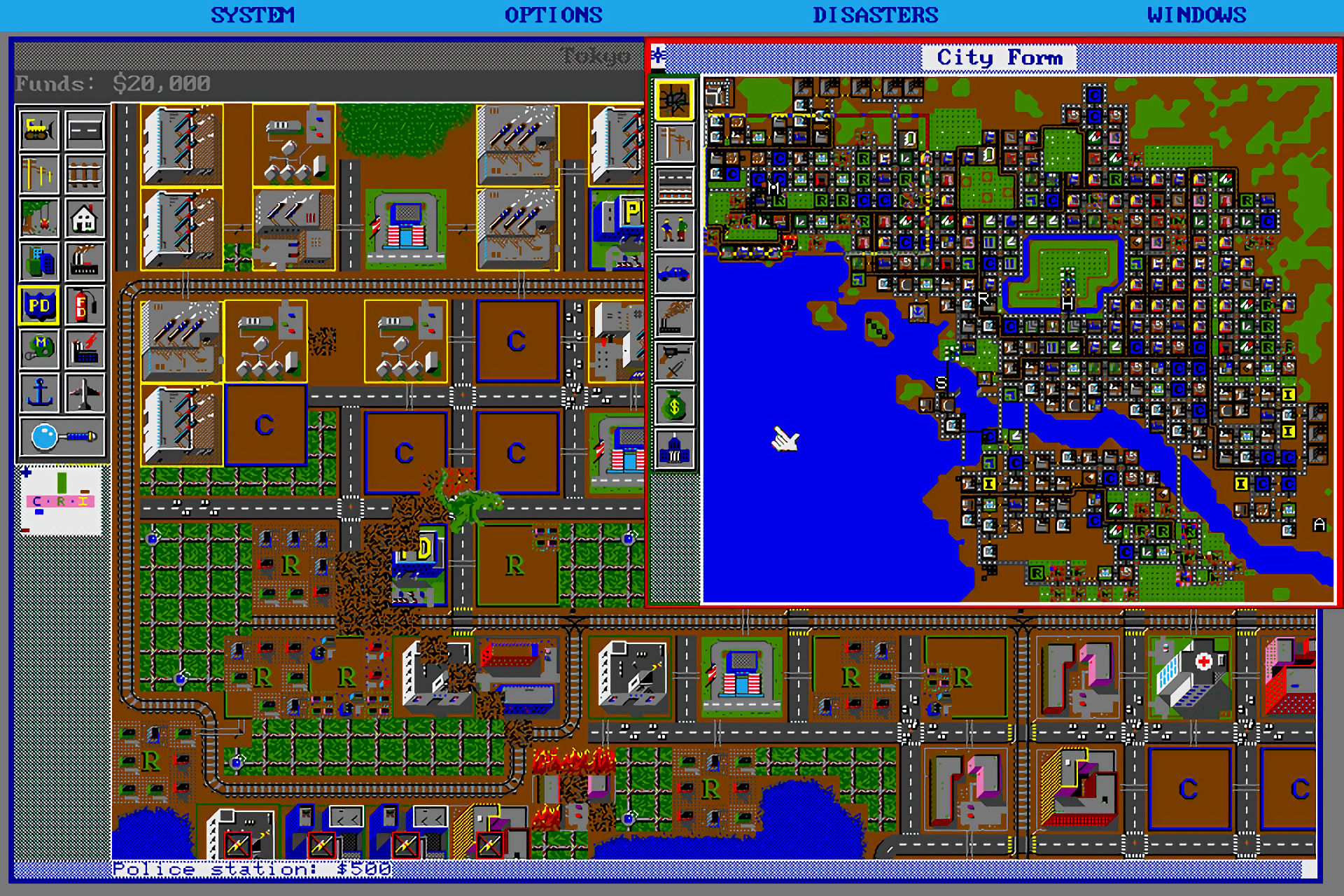From the Empire: Total War demo
”After landing from his transport ships on the American coast, Major-General Sir William Howe led the British troops eastwards, with the intention of capturing Philadelphia.
In preparation, American General George Washington readied most of his units to defend from this frontal assault around the narrow crossing of Chad’s Ford on the Brandywine. The Creek flows through the countryside of Pennsylvania, enveloped by sheer cliffs and heavily wooded hills on both sides. Knowing that much of the fast-flowing creek could not be crossed, Washington was confident of holding his position.
However, more detailed surveillance of the terrain would suggest that alternative routes could turn the battle in the favour of the British.”
(Hrmph, so what you’re telling me is to seek out an alternative route to attack the US forces. Okay…)
The task facing Howe was a daunting one. Across Chad’s Ford, Washington arrayed his multitudinous artillery and line infantry in a deadly formation and ordered them to take a heavy toll upon the British contingent facing them. Howe had little precious artillery of his own, just one unit of 6lber horse artillery facing four times their number on the opposite banks of the river.
Howe’s Light Infantry had identified a second crossing to the east of Chad’s Ford and Howe decided to stage a holding action, drawing the enemy across the Ford to engage whilst his elite infantry with cavalry support attempted to encircle the enemy. A classic pincer movement, but would the enemy fall for it?
Lead by the gruff Sgt-Major Towle of the Grenadiers, Howe sent the bulk of his forces east to the second crossing.; A full company, six units, of Infantry and two Hussar Light Cavalry commanded by Lieutenant Fortescue for flank protection. The remaining forces marched forward drawing fire from the Colonists long range artillery. Howe hoped to secure a battle line short of the Ford held by three platoons of Hessian Line Infantry, with his horse artillery in support and shielded from half the enemy big guns by a steep hill. The elite Light Infantry lead by Col. Napier pressed forwards into the wooded high ground to scout the terrain and see what disruption they could wreak upon the enemy.
Battle erupted in earnest. To the east, Towle met with resistance, first from a pair of Dragoon units who erred and came into range of the massed musket fire, followed shortly by a sprung trap of American Line Infantry. Fire was exchanged and the Grenadiers, though small in number, took a heavy toll on the enemy with their thrown bombs. To the east the US forces were routed leaving the ford unprotected and allowing Towle to press on towards the southern hamlet of Brandyville. The horse artillery to the west struck a heavy toll on the US guns before being silenced by the superior numbers arrayed against them. The Hessian Line Infantry braved the storm of iron and took up defensive positions north of Chad’s Ford whilst the audacious Major Napier lead his Light Infantry over the hill, through the woods and down to the banks of the river. There lay the prize of an unsupported American artillery unit and Napier’s Light Infantry picked off the gun crews in a matter a seconds, routing those that remained, man and beast both. Major Napier then lead his men west to the ford to support the Infantry there who were beginning to engage the enemy.
And so began a crucial moment in battle. The enemy launched an assault over Chad’s Ford and into the left flank of the Hessian Line Infantry guarding it. A spearhead of American Infantry smashed through the lines of the artillery-weakened British forces and threatened a breakout. The Dragoons that Howe had held in reserve were sent forward to contain the breakout and push back the Americans. On the hill overlooking the ford, brutal melee broke out with Napier’s Light Infantry fixing bayonets and coming to the aid of the beleaguered Hessians. The Dragoons smashed into the American Infantry arrayed against Napier and broke them. The Americans fell back across the ford and the Hessian massed gun-fire struck dozens of souls down as they attempted to cross the river to safety. The Dragoons and Napier’s men were all but spent, and Howe ordered a withdrawal of these units. From the carnage unleashed atop the hill, it was fair to claim they’d done their duty this day.
To the west, Fortescue’s Hussars rode down a unit of Line Infantry threatening to hamper Towle’s column. The American troops broke and ran for their lives. Fortescue then spotted a unit of American Long Rifles attempting to move into position against Towle. Their long range would have been devastating against the British infantry, so the Hussars committed to a charge. The American’s fled before the massed horse and into the woods. They broke out into a clearing to find themselves trapped on three sides by the Brandywine River, and on one by the British Cavalry. Eighty souls were lost by the ‘Bloody Brandywine’ that day.
The Hussars, spurred on by bloodshed, rode onwards and into the final battery of artillery guarding the east flank. The men of the guns were no match for the Hussars. Thrice in quick succession, the blades of the cavalrymen had tasted blood.
Towle’s men pushed on and captured the small settlement of Brandyville without firing as much as a single shot.
The initiative was with the British now. Fortescue’s remaining Hussars were poised to attack into the centre of the final American formations and the Hessians, although bloodied, remained undaunted. Howe called for a final assault upon Washington’s position. The Hessian Infantry advanced across the Ford in the face of withering canister fire from the remaining artillery. Spurred on by Howe who had rode forward to join the fray and support his men in the final push, they took up firing positions beneath the bluff where the remaining American forces chose to make their last stand. Fortescue advanced from the east attempting to encircle the remaining American defenders whilst the Hessian Infantry below committed to making as good an account of themselves as possible in the face of the murderous remaining American artillery. Fortescue split his troops. Half attacked north and into the artillery which was slaughtering the Infantry facing them, and Fortescue lead the remaining horsemen in a direct attack against the American General George Washington! As the horsemen engaged, the Hessian Infantry charged bringing their bayonets to bare against the embattled and demoralised defenders. Washington’s own cavalry-men were butchered to the last, the artillery paid in blood for their part in the slaughter, and the last of the American Infantry surrendered to the victorious British.
Washington, seeing all was lost, turned tail and fled. His horse as panicked as it’s master! The day belonged to the British, to Howe, and to the Hussars of Captain Fortescue. The road to Philadelphia lay wide open.



